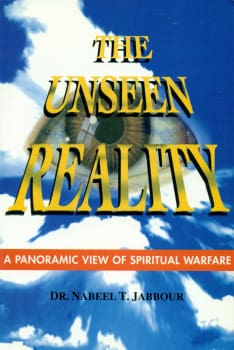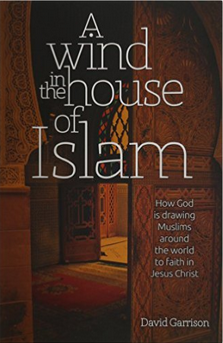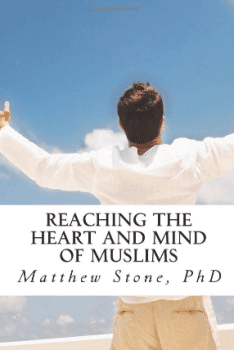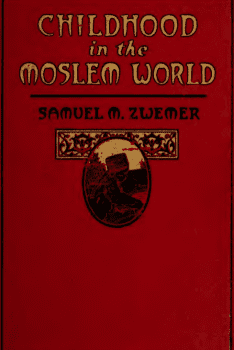Engaging Muslim Women with the Gospel
Courses and books on Muslim Women are often seen as peripheral materials. This is odd when you consider that women make up at least half the Muslim world, amounting to one billion people. Because the Muslim world is largely gendered, the world Muslim women inhabit is largely invisible to many of the men running courses and writing books on Islam. I don’t mean that women are not visible and active in public places, along with men—they are in most Muslim countries today. But the rules that guide their interaction, behavior, the topics they discuss, and the themes that shape both their religious and personal experience are different from those of Muslim men. They are two different communities occupying the same space.
I was listening to a speaker recently describing how he had just arrived in a new Muslim country with his family. There was a community event related to a wedding, and he and his wife decided to tag-team. She would go first and observe everything that was happening and the appropriate behavior so that he could go and participate as the culture required. She returned and described the situation and the appropriate behavior. Off he went, buoyed by feeling equipped for what he was going into. He arrived, and was going through the actions she’d described of bowing to the bride, joining the other guests in a circle: when he realized that his wife hadn’t told him that it was a women’s only event—he was the only man. He had been well-prepared, but not for the context for which he was suited. His experience was the mirror equivalent to women who have done training courses and read materials on Islam in Western universities. They are being well-prepared for how to interact in the men’s world.
Women make up the majority of the cross-cultural gospel workforce today and women generally are the only ones who can reach Muslim women. So it is crucial for both women and the men who teach, train, plan and recruit to have an awareness of the world of Islam for women. While men tend to focus on texts and official religious rites, looking at women’s worlds and daily lives gives us a richer understanding of Islam and the pressures and requirements that shape both men and women, such as personal requirements for purity or the role of du’a (prayer).
Why engage with Muslim women?
First, because they’re there! We cannot ignore the gospel needs of a billion people! But also because they are people of significance and influence in their communities. For a while, western plans for outreach were shaped by the idea that you would reach the head of the household (the husband) and all the rest would follow. That policy rested on the assumption that the husband-wife relationship was the strongest connection in society, as in the West. However, in many Muslim countries, the strongest relationship is mother-son: the husband-wife is not necessarily a blood connection and is often one of the weakest bonds. Husbands don’t tend to tell their wives what they are learning, especially in religious matters. If we wanted to follow social bonds to affect society, we might focus instead on older women. In many countries, the mothers of national leaders may talk to their sons to influence the decisions of the state.
It is often true that when women are younger and of marriageable age, or newly married, they are relatively powerless. But when they are older and have a son who is married, they become one of the most influential people in Muslim society. This is underlined by the tradition where Aisha, the beloved wife of Muhammad, asks him, “Who has the most power over a woman?” Muhammad tells her, “Her husband.” So she asks him again, “Who has the most power over a man?” and Muhammad answers, “His mother!”
People sometimes cite the fact that Muslim children are supposed to follow their father’s faith. However, in a recent book, Tom and JoAnn Doyle describe Muslim women as the “spiritual gatekeepers” of their families. They quote a former imam who told them that “Passing on the Islamic faith to our children was not my job. I read the Qur’an, I prayed five times a day, and I went to Friday prayers at the mosque. All the other stuff was left up to my wife. She was the one who taught the children and trained them to be good Muslims. That was her responsibility, not mine.” That was verified in an informal survey done by Dwi Handayani, of the children of mixed marriages, Christian and Muslim. The majority of the children followed their mother’s faith.
With a billion Muslim women there are obviously many differences, from rural women in Afghanistan to the educated woman who has just become a high court judge in Pakistan, to women of the diaspora in their different communities, to the hijabi fashion influencers in South East Asia. But there are also common themes, cultural and personal, that shape the lives of Muslim women across the world. These themes are realized in particular ways according to their contexts, of which we need to be aware. This is explored in the free courses available for women working in Muslim communities around the world, through When Women Speak… And it is explored further in my recently published book Islam and Women: Hagar’s Heritage.
Why engage with Muslim women? Because they’re there! They are influential in their communities. And because looking at the themes that shape their lives, we gain a richer understanding of the world of Islam and of the women and men who live within it.
For more on Muslim women see “Muslim Women: 7 Things That Might Suprise You”




